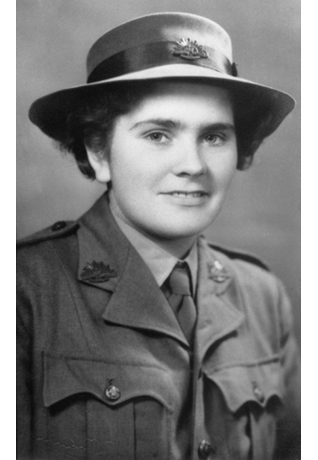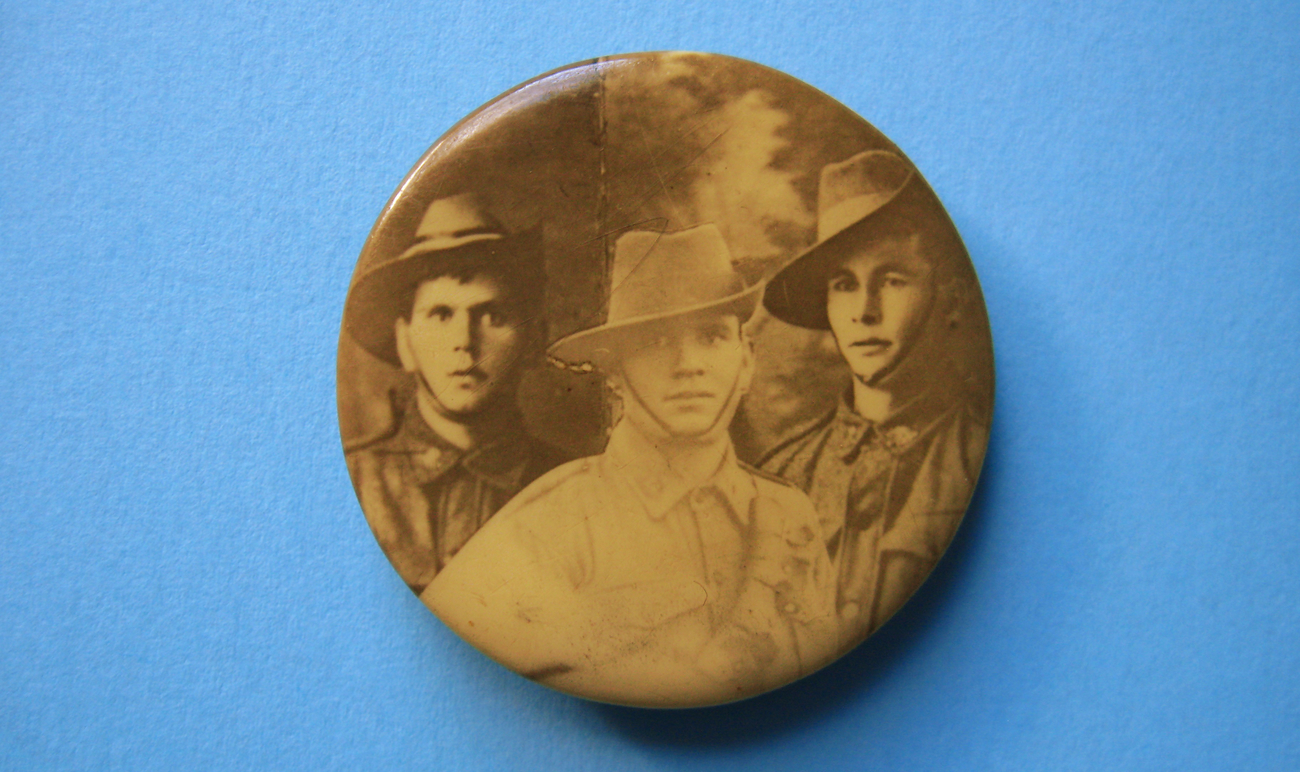…We’re not citizens, yet we’re willing to die for this place, we’re willing to die for non-Indigenous Australians, have a think about that one… — Gary Oakley

Group portrait of a platoon of Aboriginal soldiers who volunteered for service during the Second World War. The soldiers were mainly from Lake Tyers Station, known as Bung Yarnda by the local Gunai/Kurnai community in Eastern Victoria. Image courtesy of the Australian War Memorial.
Group portrait of a platoon of Aboriginal soldiers who volunteered for service during the Second World War. The soldiers were mainly from Lake Tyers Station, known as Bung Yarnda by the local Gunai/Kurnai community in Eastern Victoria. Image courtesy of the Australian War Memorial.
Despite discrimination and exclusion, thousands of Aboriginal and Torres Strait Islander peoples have served in the Australian Defence Forces since the 1860s and possibly earlier.
More than 1000 Aboriginal and Torres Strait Islander peoples served in the First World War, and more than 4000 in the Second World War. At least 300 Aboriginal and Torres Strait Islander peoples served in the Vietnam War.
-
The Boer War, 1899–1902
Before Federation, the colonies were responsible for sending troops to South Africa. Many men volunteered and paid their own way. Aboriginal and Torres Strait Islander peoples served in the Light Horse Units after joining up as regular soldiers. The Queensland Police also sent four trackers to work with the South African police at Bloemfontein. According to the Boer War Association it is thought that there were approximately twelve Indigenous soldiers present, but due to poor record keeping, no one knows for sure.
-
First World War, 1914–18
At the beginning of the First World War any attempts by Aboriginal and Torres Strait Islander peoples to enlist were rejected, though many did serve by hiding their true identities.
By 1917 there was a new military order that stated:
'Half-castes may be enlisted in the Australian Imperial Force provided that the examining Medical Officers are satisfied that one of the parents is of European origin.'
Aboriginal soldiers were among those who fought at Gallipoli, with over 1000 Aboriginal and Torres Islanders serving in the First World War.
Marion Leane Smith is to date the only identified Indigenous woman to serve in the First World War. She is of Darug heritage and served as a nurse with the British Army. Her story is told by Philippa Scarlett on the Indigenous Histories blog.
-
Second World War, 1939–45
At the start of the Second World War, the previous racist policy was dropped and Aboriginal and Torres Strait Islander peoples were allowed to enlist. A conservative estimate of hundreds of servicemen and women fought in the Second World War. Given the previous conflict and its numbers, it is likely to be far more than that, particularly given that women also enlisted. Record keeping was not the best back then, and a lot of records from that time have since been destroyed in natural disasters, fires and the like.
With the growing fears of a Japanese invasion of Australia, nearly a thousand Torres Strait Islanders joined Australia’s war effort between 1942 and 1945. This was a high number, considering the population counted only in the thousands. They later became the Torres Strait Light Infantry Battalion and fought side-by-side with other Australians.
Despite risking their lives and serving as tirelessly as that of non-Indigenous personnel, they received only one-third of the pay of other Australian soldiers. Following a strike of some of the battalion in late December of 1943, the army agreed to increase the soldier’s pay to two-thirds of that of non-Indigenous soldiers. However, it wasn’t until the late 1980s that the soldiers were finally given full back pay for their service.
-
Service from the 1950s onwards
Aboriginal and Torres Strait Islander Australians also served in the Korean War from 1950 to 1953 and the Vietnam War from 1962 to 1975 as well as in Borneo and Indonesia.
One such man was Charles Mene, a Torres Strait Islander, who after his service in the Second World War, also served in Korea and was awarded the Military Medal for leadership and coolness in battle in Malaya.
In Vietnam, Corporal Norman Womal from Queensland served with the fifth battalion in the Royal Australian Regiment and, while wounded and lying exposed, he continued to direct the fire of the machine-gunners. He died from those wounds and received a ‘Mention in Despatches’ for his bravery.
Discrimination at home
Aboriginal and Torres Strait Islander peoples have served on the ground, in the air, at sea and on horseback. Their time in the Defence Forces was, for many, their first time being treated as equals. Unfortunately, when they returned to civilian life, they returned to discrimination and prejudice. Many found that they were ejected from hotels and public places, or denied employment and the benefits offered to other returning service personnel.

The Australian Aboriginal League float in the 1947 May Day procession protested the conditions in which Aboriginal people found themselves on return from the Second World War. Image courtesy of the Australian War Memorial, P01248.001.
The Australian Aboriginal League float in the 1947 May Day procession protested the conditions in which Aboriginal people found themselves on return from the Second World War. Image courtesy of the Australian War Memorial, P01248.001.
In 1945, after the Second World War ended, a War Service Land Settlement Agreement between the Commonwealth and states, enabled returned service personnel access to land under soldier settlement schemes. Following the agreement, the states and the Commonwealth enacted solider settlement legislation or amended existing legislation.
As in the schemes introduced after the First World War, Aboriginal personnel were not specifically excluded but the assessment procedures were prejudiced against them and many were rejected from the scheme. This was particularly punishing because the scheme offered lands that had always been Aboriginal and Torres Strait Islander lands.
Service today
Aboriginal and Torres Strait Islander peoples continue to serve Australia wherever they are needed at home and abroad.
Defending our coastline is NORFORCE; the largest army surveillance unit in the world, which has over sixty per cent Aboriginal and Torres Strait Islander personnel. This regiment which is one of three, patrols some 1.8 million square kilometres of land in the Northern Territory and Kimberley region of Western Australia.
The history of NORFORCE goes back to the ‘Nackeroos’ — a Northern Territory Special Reconnaissance Unit and Twenty First Northern Australia Observer Unit — which was formed during the Second World War as a coastal patrol when there was fear of a Japanese invasion.
NORFORCE uses the traditional knowledge and skills of Aboriginal personnel; generally locals who know their land, sea and the seasons intimately. The motto of the Pilbara Regiment is Mintu wanta, which is a Western Desert Aboriginal phrase meaning ‘always alert’. It is the first time that an Aboriginal language has been incorporated in an Australian Defence Force regimental crest.
In recent years, Aboriginal and Torres Strait people have proudly served peace-keeping and combat missions in Afghanistan, Iraq, Timor-Leste and the Solomon Islands.
Meet a few of the men and women who contributed to the war effort

Oodgeroo Noonuccal, also known as Kath Walker, was an army wireless operator in Darwin during the Second World War. A Quandamooka woman, Oodgeroo was also a poet and a prominent Aboriginal rights activist. Image courtesy of the Australian War Memorial, P01688.001.
Oodgeroo Noonuccal, also known as Kath Walker, was an army wireless operator in Darwin during the Second World War. A Quandamooka woman, Oodgeroo was also a poet and a prominent Aboriginal rights activist. Image courtesy of the Australian War Memorial, P01688.001.

Corporal Helen Annie McDonald from Colac enlisted with the Australian Women's Army Service on 18 October 1943. Image courtesy of the Australian War Memorial, P01651.001.
Corporal Helen Annie McDonald from Colac enlisted with the Australian Women's Army Service on 18 October 1943. Image courtesy of the Australian War Memorial, P01651.001.

Reg Saunders is the first Aboriginal commissioned officer who fought in the Middle East, North Africa, Greece, Crete and New Guinea, and again in the Korean War. A Gunditjmara man, Reg was awarded a Member of the Order of the British Empire (Civil) for his military services. Image courtesy of the Australian War Memorial.
Reg Saunders is the first Aboriginal commissioned officer who fought in the Middle East, North Africa, Greece, Crete and New Guinea, and again in the Korean War. A Gunditjmara man, Reg was awarded a Member of the Order of the British Empire (Civil) for his military services. Image courtesy of the Australian War Memorial.

Leonard Waters was Australia’s only Second World War Aboriginal fighter pilot. A Kamilaroi man from Nindigully, Queensland, Leonard flew ninety-five missions over Japanese-held islands in the Dutch East Indies and New Guinea. Image courtesy of the Australian War Memorial, P01659.001.
Leonard Waters was Australia’s only Second World War Aboriginal fighter pilot. A Kamilaroi man from Nindigully, Queensland, Leonard flew ninety-five missions over Japanese-held islands in the Dutch East Indies and New Guinea. Image courtesy of the Australian War Memorial, P01659.001.

Many men and women contributed to the war effort at home. Pictured here are a group of Aboriginal women and girls at the Cummeragunja Government Mission knitting socks, jumpers and balaclavas for service personnel. Image courtesy of the Australian War Memorial
Many men and women contributed to the war effort at home. Pictured here are a group of Aboriginal women and girls at the Cummeragunja Government Mission knitting socks, jumpers and balaclavas for service personnel. Image courtesy of the Australian War Memorial
Women at War
Aboriginal and Torres Strait Islander women have served in the Australian Defence Force since the First World War, and they continue to do so today.
Interviews with Indigenous women in the Army, Navy and Airforce can be found online at the Department of Defence website:


